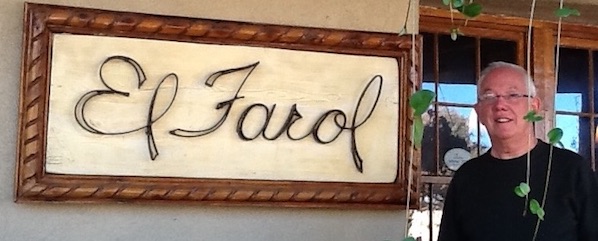The El Farol Bar Problem

There is a bar in Santa Fe, El Farol on Canyon Road, where a few years ago people could go on a Thursday night to hear Irish music. They would go if they expected few people to be there, but would stay home if they expected it to be crowded. Brian Arthur realized this represented a decision problem where forecasts ("expectations" in econ jargon) that many would attend would lead to few attending, and forecasts that few would attend would lead to many attending. This gave a logical self-contradiction not unlike the Liar's Paradox: expectations would lead to outcomes that would negate these expectations.
Arthur presented a paper on this at the American Economic Association meeting in 1994. It was a very early agent-based paper and wasn't much noticed at first, but it got taken up by physicists and became well known in complexity circles. El Farol has since spawned many “solutions,” variants, and further papers. But solutions were not quite Arthur's intention. At the time, economists had become interested in indeterminacy and fundamental uncertainly, and Arthur was looking to formulate a suitable "toy problem" to illustrate these—a stripped-down problem that's simple to state but whose outcome or resolution brings a wealth of lessons. El Farol was simple to state and it showed that indeterminacy, heterogeneity, an evolving ecology, and self-organization arise naturally in economic problems.
Indeterminacy. If there were an obvious "rational" model that all agents could use to forecast attendance and base their decisions on, then a deductive solution would be possible. But this is not the case. If a rational model existed and predicted few will attend, all would go; if it forecasted many will attend, nobody would go: it would self-negate. Rationality therefore is ill-defined, so the problem of choosing a solution is not well-defined. Agents face fundamental uncertainty: they don't know how other agents will decide on their forecasts.
Heterogeneity. By similar reasoning any commonalty of expectations gets broken up and agents will be forced to differ. It is reasonable to assume that agents will update or replace their forecasting methods if they don't work. The problem immediately becomes adaptive as well as agent-based.
An emergent ecology. Individual forecasts compete to be valid in a situation dependent on others' forecasts. In other words forecasts compete in an "ecology" of forecasts.
The ecology of expectations self-organizes into an equilibrium pattern which hovers around the "comfortable" level in the bar. (If fewer came in the long term, low forecasts would be valid, so many would come. An attraction to this level emerges.) This emergent outcome is organic in nature, for while the population of forecasts on average supports this "comfortable" level, it keeps changing in membership forever. It is something like a forest whose contours do not change, but whose individual trees do.
These properties are robust to changes in types of forecasts created as long as there is a reasonable diversity of them.